You are here
Federal Deficit and Debt: December 2023
Every month the U.S. Treasury releases data on the federal budget, including the current deficit. The following contains budget data for December 2023, the third month of fiscal year (FY) 2024.
Current Federal Deficit
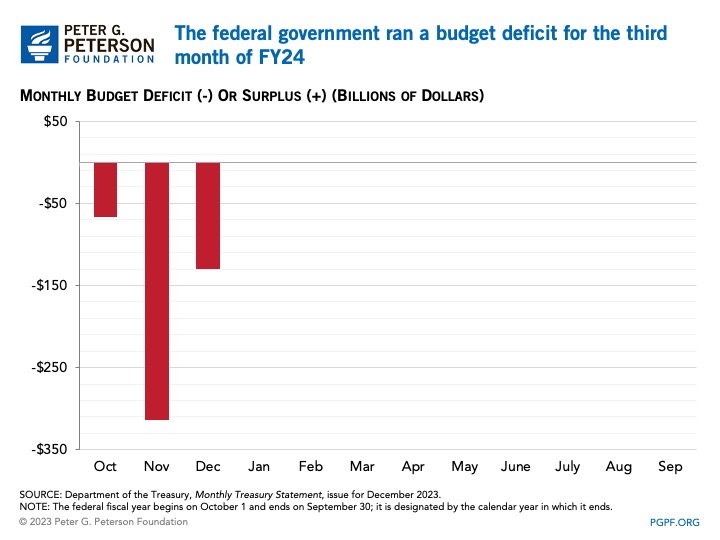
- Federal Budget Deficit for December 2023: $129 billion
- Federal Budget Deficit for December 2022: $85 billion
The federal government ran a deficit of $129 billion in December 2023 -- $44 billion more than the deficit of $85 billion that was recorded in December 2022. However, since January 1 is a holiday, certain payments shifted into December in both years, increasing outlays on net in December 2023 by $2 billion. Excluding the effect of that timing shift, the year-over-year difference in the deficit would have been a $42 billion increase.
Spending in December 2023 was up by $19 billion compared to last year, driven by increases in outlays for Net Interest ($14 billion more than in December 2022) and Social Security ($13 billion). Partially offsetting those increases was, in particular, a $13 billion decrease in outlays related to the COVID-19 Pandemic Refundable Credits. Revenues in December 2023 were $26 billion below collections from a year ago, with the largest effect being a $37 billion decline in collections of income taxes attributable to the timing of tax payments.
Cumulative Federal Deficit
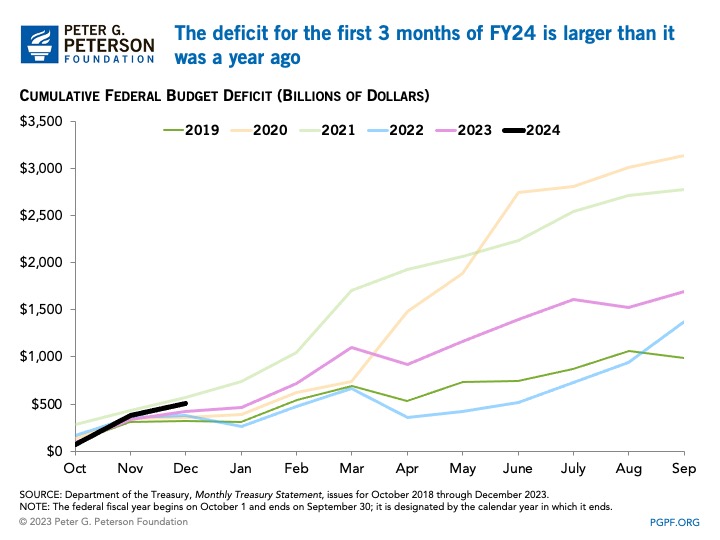
- Cumulative FY24 Deficit: $510 billion
- Cumulative FY23 Deficit: $421 billion
This year’s cumulative deficit is $89 billion above last year’s level. However, because October 1 fell on a weekend in 2022 and 2023, certain federal payments were shifted into the previous fiscal year in both FY23 and FY24. Without those effects, and including the slight January 1 timing shift adjustment, the deficit for FY24 through the end of December would be $96 billion above last year’s corresponding total.
For the first 3 months of FY24, total outlays were $1.6 trillion, $171 billion higher than the same period in the previous year. Adjusting for timing shifts, spending was $178 billion above the same period last year. Two areas of the budget have experienced rapid increases so far this year. Net Interest has grown by $71 billion relative to the first quarter of last fiscal year, mostly due to higher interest rates; deposit insurance has risen by $62 billion because of actions related to bank failures in 2023. In addition, spending on Social Security and defense increased rapidly in the first three months of the fiscal year. Partially offsetting those increases in outlays was a $32 billion decrease in spending related to the government’s response to the COVID-19 pandemic and a $13 billion reduction in spending related to the end of emergency funding for the Supplemental Nutrition Assistance Program. Outlays for the Department of Education also declined by $13 billion because some transactions related to the student loan program were recorded in fiscal year 2023 (but not in fiscal year 2024).
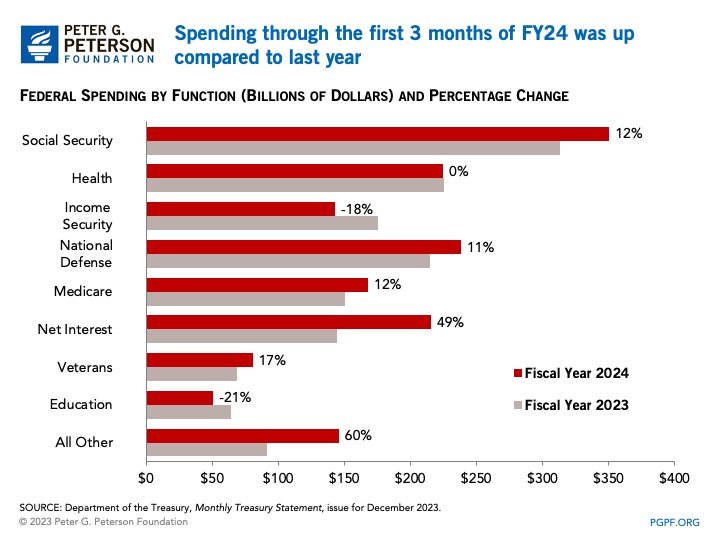
Through the first 3 months of FY24, total revenues increased by $82 billion compared to the previous year. Collections of individual and corporate income taxes have been much higher in FY24 than through the first 3 months of FY23, driven by deferred payments of individual and corporate income taxes for taxpayers in locations that suffered natural disasters.
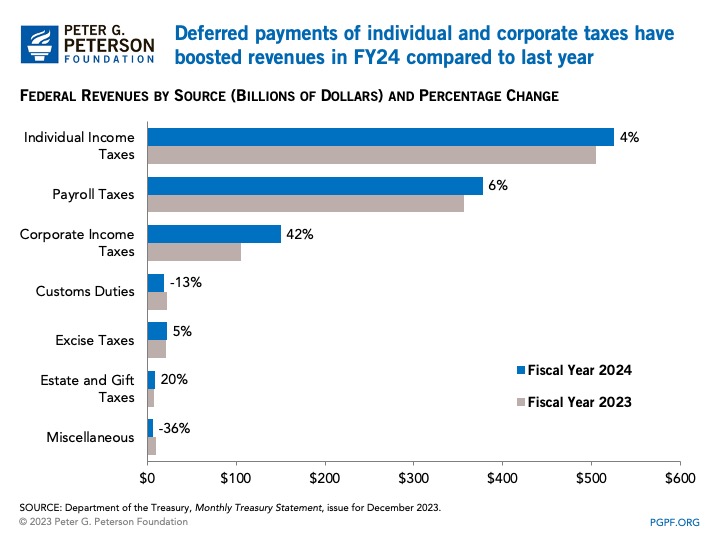
National Debt
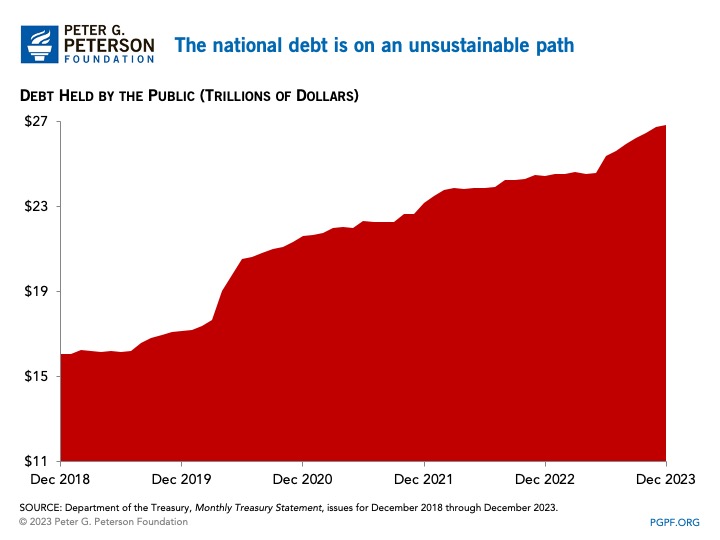
- Debt Held by the Public at the end of December 2023: $26.8 trillion
- Debt Held by the Public at the end of December 2022: $24.5 trillion
Despite a strong economy, spending has been rapidly outpacing revenue collections. The unsustainable upward trajectory of deficits and debt argues for bipartisan solutions to improve the country’s fiscal outlook, including a fiscal commission.
